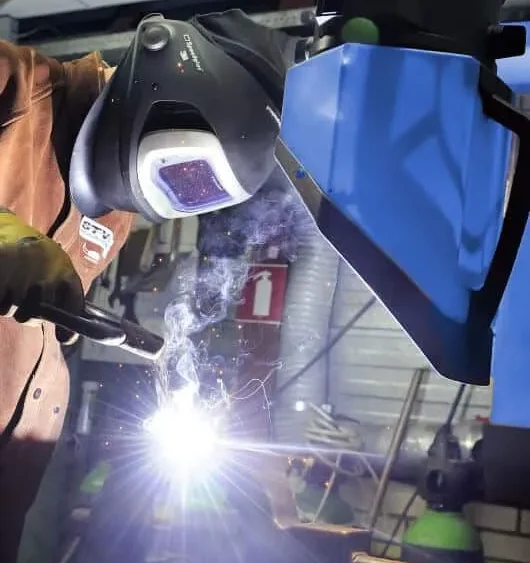According to statistics, welding safety is all about being 99% proactive and 1% reactive. This means if you do not take action from the beginning then it is too late. Welding as a process vaporizes solid metal and as the metal cools, it changes into solid particles in the form of fume. The danger is immense as fumes are actually made up of very small particles, and if not removed they remain suspended in the air indefinitely. This calls for fume control.
How toxic is it
Where there is no fume control, there are a lot of toxic contaminants in the air such as:
- Lead
- Copper
- Fluorides
- Iron oxide
- Manganese
- Mercury
There are also dangerous gases suspended such as Ozone, Nitrogen oxide, and Carbon monoxide.
The health risks
Welding has been named as one of the top jobs with an increased risk of occupational disease. One of the fumes, manganese is extremely toxic. According to the Center for Disease Control, manganese is present in all welding fumes. This metal is known to cause a disease similar to Parkinson’s. The symptoms include problems with swallowing, fatigue, tremors, body stiffness, and headaches. Welding fumes are also cancerous and COPD risk factors. Things are definitely worse when there is coughing, shortness of breath, dizziness, and wheezing. If such symptoms occur it is an indication that a welding fume extractor is needed and your employees need serious medical attention.
Fume control
There are two ways to go about fume control to prevent welding fume from making you or your employees sick. You can either improve your ventilation or make use of fume control equipment.
Ventilation
We are not talking about big windows but mechanical ventilation. Of course, you can have natural ventilation but mechanical ventilation is a necessary safety precaution. There are three types of mechanical ventilation:
- General ventilation
- Local forced air
- Local exhaust
When do you need to get mechanical ventilation?
- When in confined spaces
- When the ceiling height is below 16ft
- When partitions obstruct proper ventilation
Hoods
These are mainly movable ducts that are placed above the welding area. The aim is to provide sufficient airflow volume. This is because airflow volume is a primary factor when it comes to the effectiveness of a welding fume extractor.
Healthy workers are productive. As an employer you need to know that engaging the services of a welding fume extractor is paramount for workplace safety and not doing so may even amount to negligence.




Comments are closed.